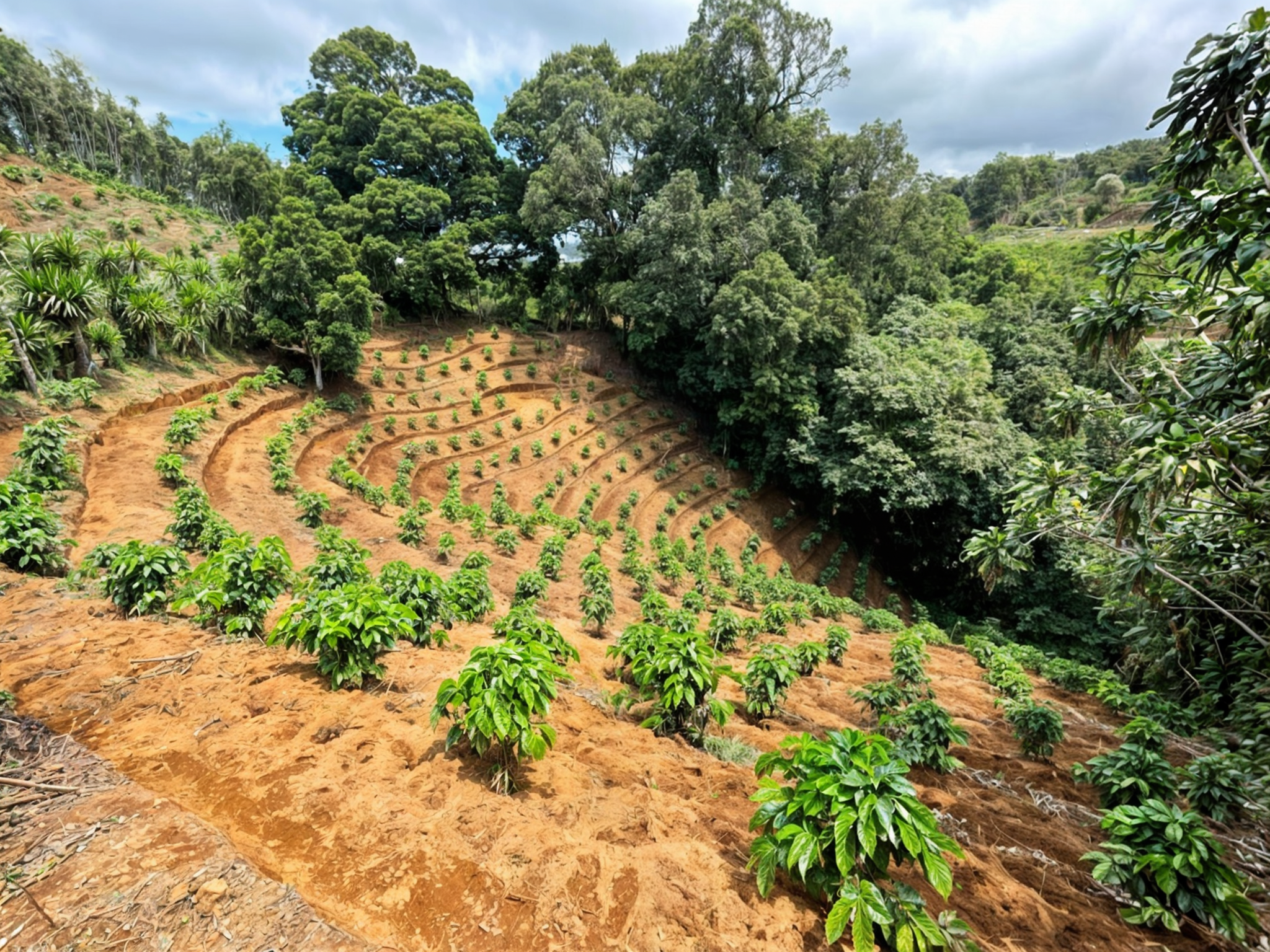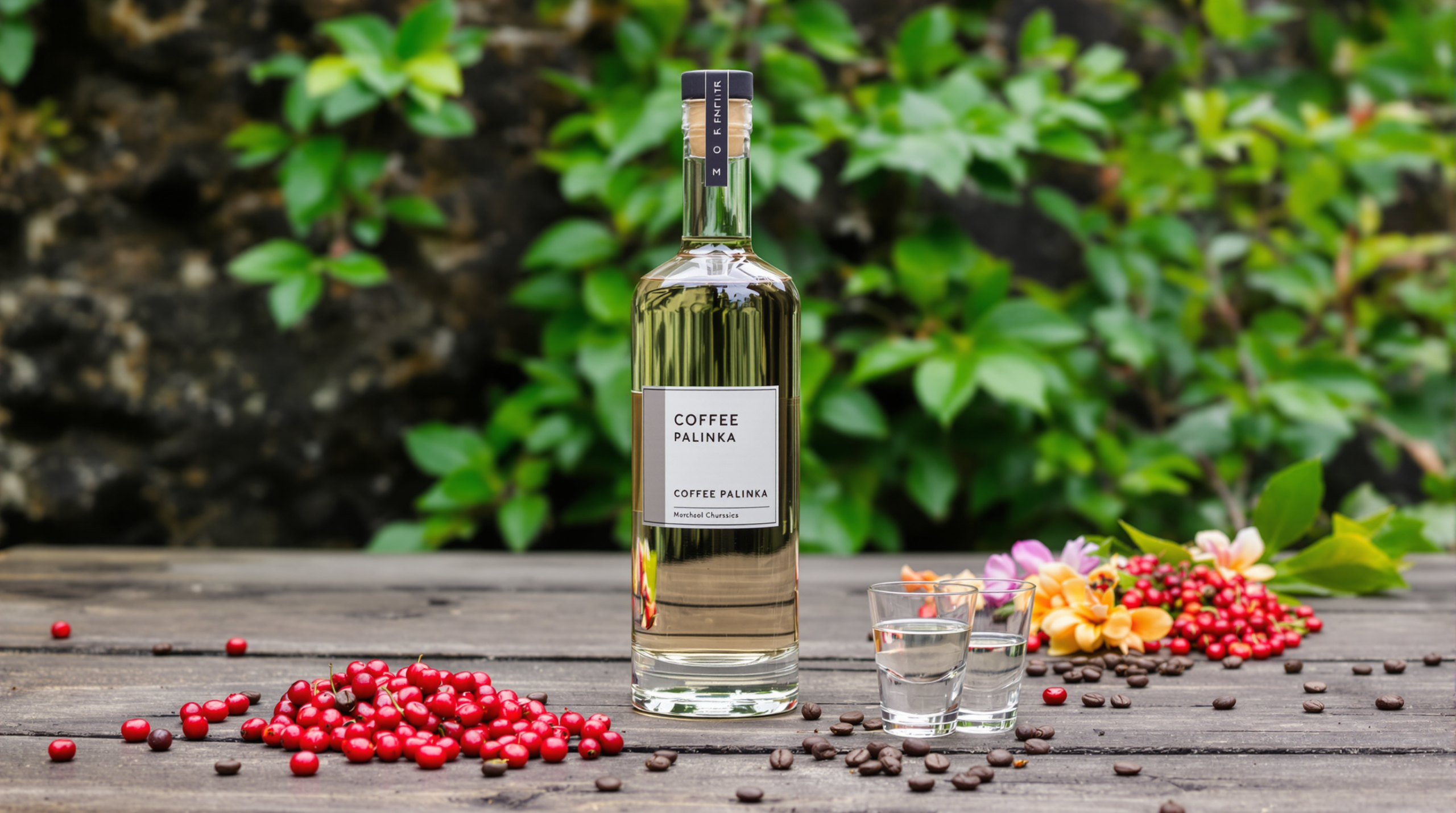 2025-01-02
2025-01-02
 PODCAST
PODCAST
The Story of the Hungarian-Costa Rican Coffee and Maduro, the Eye
Costa Rica’s unique combination of high altitudes, volcanic soils, and favorable climate creates ideal conditions for producing high-quality coffee. Regions such as Tarrazú, Tres Ríos, and Naranjo are particularly renowned for their exceptional coffee due to these factors. Here, in the heart of the quality coffee universe, there hides a small experimental farm: the Bacore Bányai Research farm. With AGRI-FOOD.AI, they use AI and machine vision to determine the ripeness of the coffee cherries—pioneering AI usage in quality coffee farming!

The Secrets of Costa Rican Coffee
Costa Rican coffee plantations thrive in high altitudes, where coffee beans develop slowly, enhancing their complexity. Moderate temperatures and abundant rainfall further support the cultivation of premium coffee. The country’s rich volcanic soil provides essential nutrients that contribute to the coffee’s flavor profile, including:
1. Nitrogen (N):
- Essential for leaf growth and overall plant vigor. It supports photosynthesis and helps coffee plants develop lush, green foliage.
2. Phosphorus (P):
- Important for root development and flowering. It enhances the formation of coffee cherries and improves the plant’s energy transfer processes.
3. Potassium (K):
- Supports the development and quality of coffee cherries. It improves water use efficiency and enhances resistance to diseases and environmental stress.
4. Calcium (Ca):
- Strengthens cell walls, improving plant structure and resistance to pathogens. It also aids in nutrient uptake.
5. Magnesium (Mg):
- Vital for chlorophyll production and photosynthesis. It ensures efficient energy transfer within the plant.
6. Iron (Fe):
- Promotes healthy leaf color and growth by playing a role in chlorophyll synthesis.
7. Sulfur (S):
- Necessary for protein synthesis and enzyme function. It helps maintain the flavor and aroma profile of coffee beans.
8. Trace Elements (Zinc, Manganese, Boron, Copper):
- These micronutrients support various enzymatic and physiological processes that contribute to the overall health of the coffee plant.
The abundance of these nutrients in volcanic soil ensures that coffee plants grow strong and healthy, producing cherries with exceptional flavor complexity, aroma, and body. The slow release of minerals from volcanic rock also allows for steady and consistent nourishment over time, ideal for high-quality coffee cultivation.
Algae from Lake Balaton – Hungary
Despite having all these essential nutrients, Costa Rican coffee farmers never thought about enriching their soil with European algae—until the engineers and microbiologists arrived. Situated between Volcán Poás and Volcán Congo, the Banyai Coffee Concept plantations are spread across three estates:
1. BA.CO.RE (Banyai Coffee Research):
- The main estate where research began, comprising 20 microplots.
2. Finca Bendición:
- Located on the opposite side of the valley, where Geisha, Sarchimor, and San Roque varieties are primarily cultivated across four microplots.
3. Finca S. Anna:
- Located on the other side of the ridge, with nine microplots known for their exceptional characteristics.
The estate spans an altitude of 1,410–1,550 meters above sea level and is traversed by the crystal-clear “Blessing of God” spring, which is an immense resource for processing and caring for newly planted shrubs. company emphasizes biodiversity, with over 300 saplings planted in recent years, as well as jasmine bushes, banana and plantain groves, lime and mango trees. Weed control is done exclusively by hand with machetes, and no chemical herbicides are used among the coffee plants. The diversity in planting and soil composition contributes significantly to the high quality of Banyai coffees.
Péter Cserta, an engineer by training, brought a visionary approach to coffee farming. Watching workers pick coffee cherries one by one, he wondered if AI could streamline this labor-intensive process. “When you arrive with your ideas, locals are nodding, they have already heard of microbiomes and algae,” says Péter. “But soon after we planted a new group of plants and regularly sprayed the live algae foliar fertilizer developed in Fermentia Laboratories, the visible results were inevitable. Plants grew higher, fasterand were visibly healthier and stronger.”

Maduro and Machine Vision
Péter Cserta, coming from an engineering background, approached coffee farming with a mindset anchored in the future. Watching harvester workers picking the coffee cherries one by one and thinking of the hard work following the harvest, he got an idea. “As the workers bring in the harvested cherries to the processing facility, we have to define the quality of the whole branch,” says Péter. “The quality is determined by the quantity of the totally ripe cherries—those that give the best quality coffee—in the harvested product.”
There are traditional methods for this:
1. Visual Sorting and Sampling:
- Hand Sorting: Workers manually sort the cherries into ripe (red or yellow, depending on the variety) and unripe (green or underdeveloped) categories.
- Sampling: A representative sample is taken from the harvested batch. The percentage of ripe and unripe cherries in the sample is then extrapolated to estimate the proportions in the entire harvest.
2. Weight-Based Estimation:
- Density Differences: Ripe cherries are denser and heavier than unripe cherries. Using a balance, a sample is weighed before and after sorting to estimate the proportions based on weight.
- Water Float Test: Cherries are placed in water; ripe cherries tend to sink, while unripe or defective ones float, allowing for separation and estimation.
Péter questioned whether these methods could be replaced with something AI-based technology? He addressed this question to AGRI-FOOD.AI experts, and the answer turned out to be a new mobile application. AGRI-FOOD.AI developers worked together with coffee experts—resulting in the creation of Maduro, an app that categorizes harvested cherries as green (unripe) or red (ripe) in just a few seconds. The AI then defines the overall quality of the coffee.
Testing Maduro at work, Péter told their workers on the plantation that the quality of the harvested cherries would be defined by using Maduro, and the price would be calculated following the results. “The accuracy convinced even the skeptics,” says Péter. “Soon, neighboring farms asked if they could adopt the technology.”
The success of Maduro led to the development of an integrated version for processing facilities, making quality control easier in factories. “People in Costa Rica think very clear,” says Péter. “They don’t need to know where you’re from or what your degree is—if you can prove your expertise with such visible results, you can convince them, and they’ll try to adapt your methods in their own fields soon.”
Péter and AGRI-FOOD.AI experts are now exploring other innovations for sustainable coffee farming, such as drone spraying for targeted nutrient application. Peter is also experimenting with repurposing leftover coffee cherries to produce coffee pálinka—a nod to sustainability and Hungarian tradition.

If you want to know more about the experimental coproduction of Peter’s company and AGRI-FOOD.AI, or if you have your own questions in connection with coffee farming and AI check our new podcast episode! Péter and Gergő will explain everything!
For further information on Maduro, explore our website!

Work at peak ripeness – and reap the benefits! →
 2025-01-02
2025-01-02
 share
share


 Our website uses cookies
Our website uses cookies